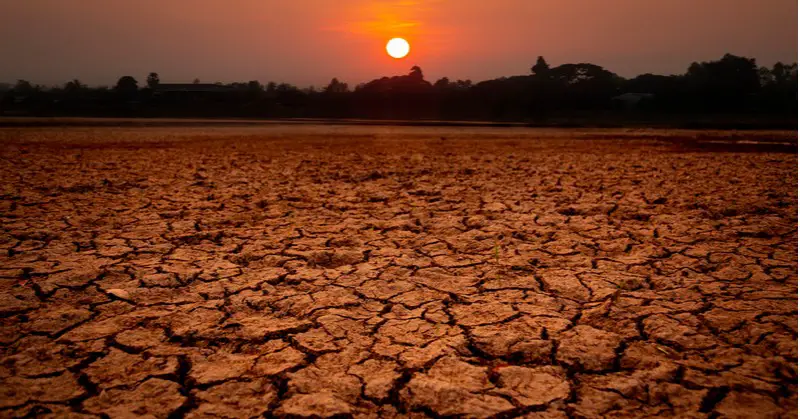The 50-year anniversary of a scary data analysis project is upon us. In 1970, an international team of researchers at MIT began a project using the most cutting-edge computer simulation program available at the time to predict when earth’s interlocking resources could no longer sustain civilization as we know it.1
The half-century-old MIT analysis concluded: “If the present growth trends in world population, industrialization, pollution, food production, and resource depletion continue unchanged, the limits to growth on this planet will be reached sometime within the next one hundred years. The most probable result will be a rather sudden and uncontrollable decline in both population and industrial capacity.” 2
The project was one of many undertaken in the wake of the 1962 publication of Rachel Carson’s book, Silent Spring, which sounded an alarm about mankind’s negative impact on earth’s natural systems and is credited for inspiring the modern environmental movement.3 Concerns over the book’s message gained a critical mass by 1970, a year that saw the first Earth Day, and the passage of the Clean Water Act, the Clean Air Act, and the Endangered Species Act. 4 Among projects undertaken around the globe was one by the Club of Rome, an international group of academics, civil servants, and industry leaders, which commissioned researchers at MIT to use their powerful computer modeling program to essentially forecast the potential reality of Silent Spring.
The MIT simulation used a concept known as “systems dynamics” developed by Professor Jay W. Forrester in the 1950s to model “the relationships between all the parts of a system and how those relationships influence the behavior of the system over time.” 5 The simulation used data from five interrelated factors that included rapid population growth, accelerating industrialization, widespread malnutrition, depletion of nonrenewable resources, and environmental deterioration.1
The MIT team programmed the model to test several different assumptions including what was called the “standard run” (business as usual) in which no changes are made to alter the dynamic system; “technological scenarios” such as those that might increase available resources or reduce pollution; and “stabilization” scenarios if either population growth or industrial output were to be stabilized.2
“In the ‘standard run’ scenario, collapse came as a result of resource depletion forcing a slowdown in industrial growth, starting around 2015. The second scenario – the first of the ‘technological’ scenarios – assumed twice as many resources were available as a result of technological advances. In this projection, population collapse came about as a result of too much pollution. The majority of the scenarios show industrial output declining in the 2020s and population declining in the 2030s.”2
The video below from the Australian Broadcasting Corporation (ABC) profiled the output from Australia’s largest computer using MIT’s simulation program.6
The Australian reporter interprets the data for viewers and states that in “the year 2020, the condition of the planet becomes highly critical. If we don’t do anything about it, this is what’s going to happen. The quality of life goes back to practically zero. Pollution becomes so serious…that it will start to kill people so the population will diminish…at this stage, round about the year 2040, 2050 civilized life as we know it on this planet will cease to exist…Hopefully, it won’t be allowed to happen.”6
Was there hope 50 years ago? The Australian reporter asked Dr. Aurelio Peccei, founder of the Club of Rome, what his lifestyle might look like by 2070. Here is part of Dr. Peccei’s reply: “I think you will love nature and continue then what I think you are doing now to protect the environment to avoid this man-made world where the creatures of nature, the animals, the planet, the green spaces, the wilderness are bound to disappear.”6
With the unprecedented destruction of Australia’s shocking 2020 wildfire season, it is left to each of us to consider to what extent the obliteration of large swaths of that country’s ecosystem and its inhabitants represents an unfolding reality of the worst-case computer simulation from 50 years ago. And that is without even considering the nearly unfathomable tragedy of the unfolding pandemic we are experiencing worldwide.
Article updated March 28, 2020 – A.E. Toole
References
1Meadows DH, et al. The Limits to Growth. Universe Books: New York. 1972. Download available https://www.clubofrome.org/report/the-limits-to-growth/
2Jackson T and Webster R. Limits Revisited: A Review of the Limits to Growth Debate. Report. All-Party Parliamentary Group (APPG). April 2016. http://limits2growth.org.uk/revisited
3Carson R. Silent Spring. Houghton Mifflin: New York, 1962. https://rachelcarson.org/SilentSpring.aspx
4Earth Day. About Us: The History of Earth Day. https://www.earthday.org/history/
5MIT Sloan School of Management. System Dynamics. 2020. https://mitsloan.mit.edu/faculty/academic-groups/system-dynamics/about-us
6ABC News In-depth. Computer Predicts the End of Civilization. Aired 9 November 1973. https://www.youtube.com/watch?v=cCxPOqwCr1I
Note: A brief report on the MIT study can be found here: Meadows DH, et al. The Limits to Growth: A Report to The Club of Rome. 1972. https://web.ics.purdue.edu/~wggray/Teaching/His300/Illustrations/Limits-to-Growth.pdf

This Site Was Inspired By An Interest in Protecting the Environment:
We had the privilege and joy of learning from Dr. Charlie Stine who instilled a love for the natural world through incredible field trips with the Johns Hopkins Odyssey Certificate program in Environmental Studies. At the time, the program was endorsed by the Maryland Department of Natural Resources. Sadly, after Dr. Stine retired, the program was phased out. We hope that we honor his legacy by shining a bright light on environmental issues and sharing good news about the success of various conservation programs when possible.
Subscribe to our email newsletter to get the latest posts delivered right to your email.


Comments